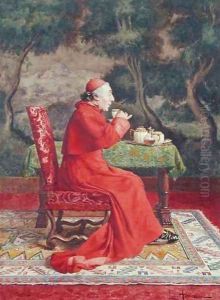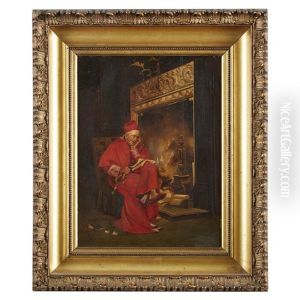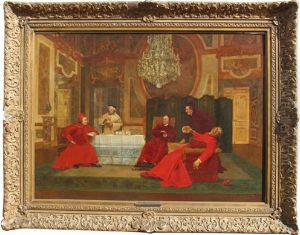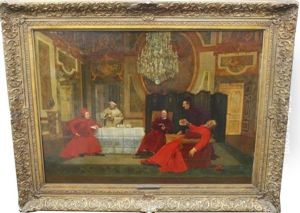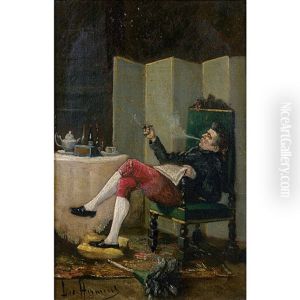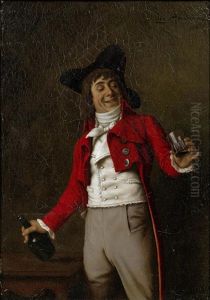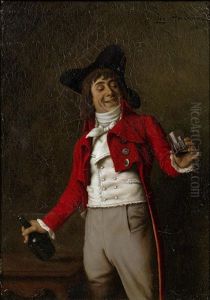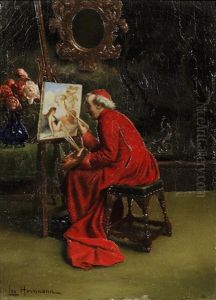Leo Hermann Paintings
Leo Hermann, sometimes also spelled Léo Herrmann, was a French illustrator and painter, born on August 5, 1860, in Paris, France. He was known for his genre scenes, often capturing the Parisian life and its social nuances during the Belle Époque era. Hermann's work was characterized by a keen observation of everyday life, with a particular focus on the portrayal of women and children in urban settings.
Educated in the arts in Paris, Hermann studied under prominent painters such as Jean-Léon Gérôme, one of the most famous academic painters of his time, and Aimé Morot, known for his realist works. These influences are evident in Hermann's meticulous attention to detail and his commitment to realism. However, he also incorporated elements of impressionism into his work, particularly in his use of light and color.
Hermann's career as an illustrator saw him creating works for various publications, including popular journals of the time like 'Le Monde Illustré', 'Le Rire', and 'L'Illustration'. His illustrations often depicted humorous or satirical scenes, reflective of the societal changes and attitudes of the late 19th and early 20th centuries.
While Leo Hermann was successful and quite popular in his time, his work did not garner the same lasting historical attention as some of his contemporaries. Despite this, his contributions to genre painting and illustration during the Belle Époque remain noteworthy for their depiction of the vibrancy and complexities of urban life.
Leo Hermann passed away on October 28, 1931, leaving behind a legacy that captures the spirit of an era that was rich in cultural and artistic dynamism. His paintings and illustrations remain a valuable record of the social fabric and the aesthetic preferences of his time, providing insight into the daily lives and character of the period.
